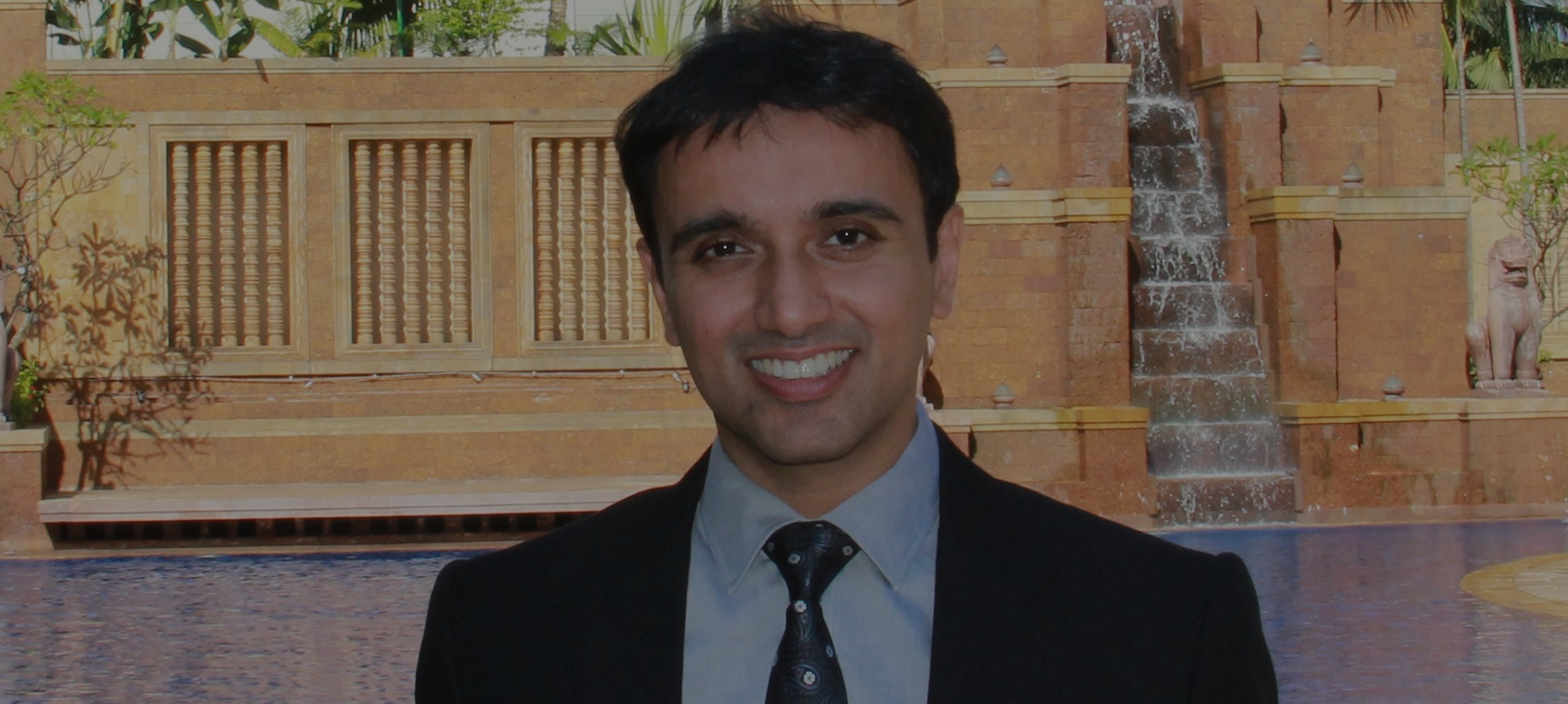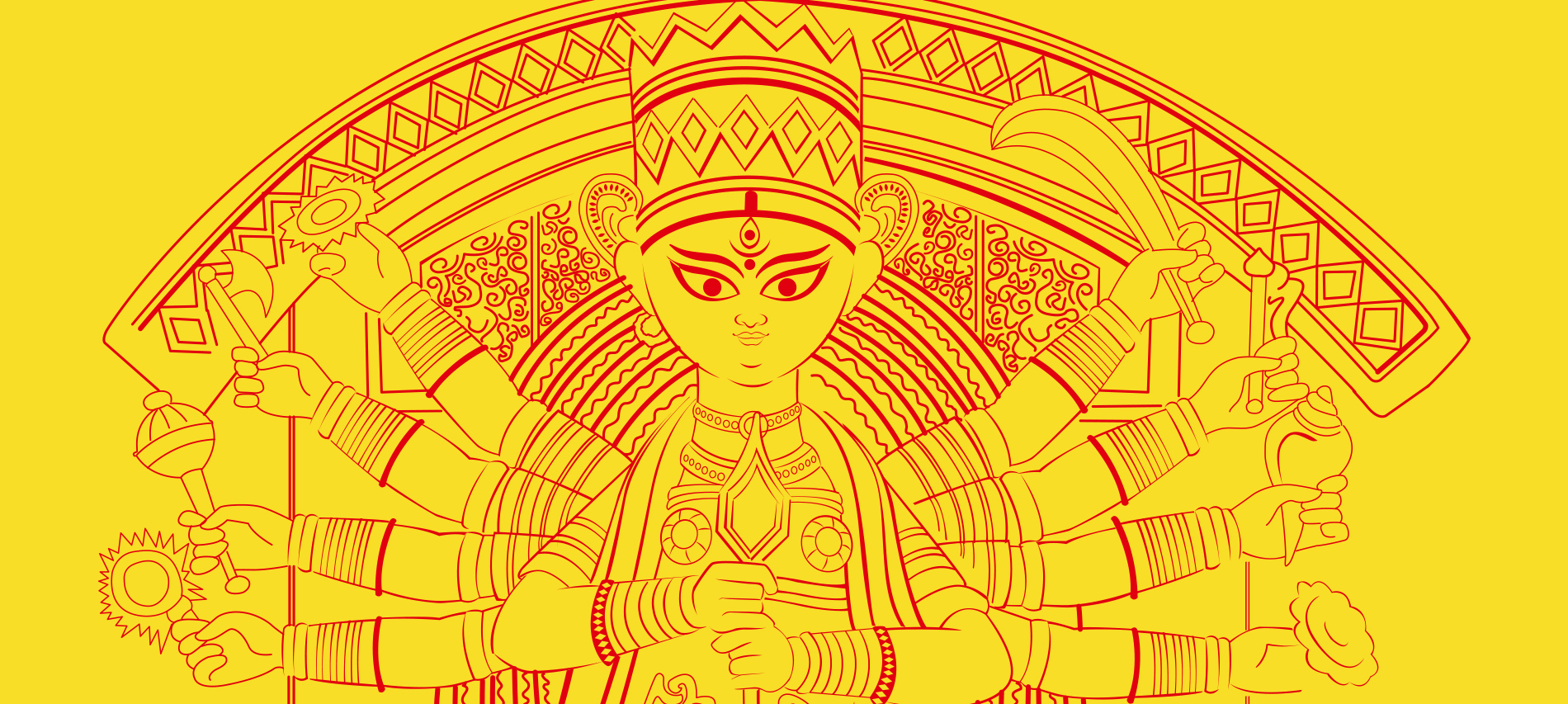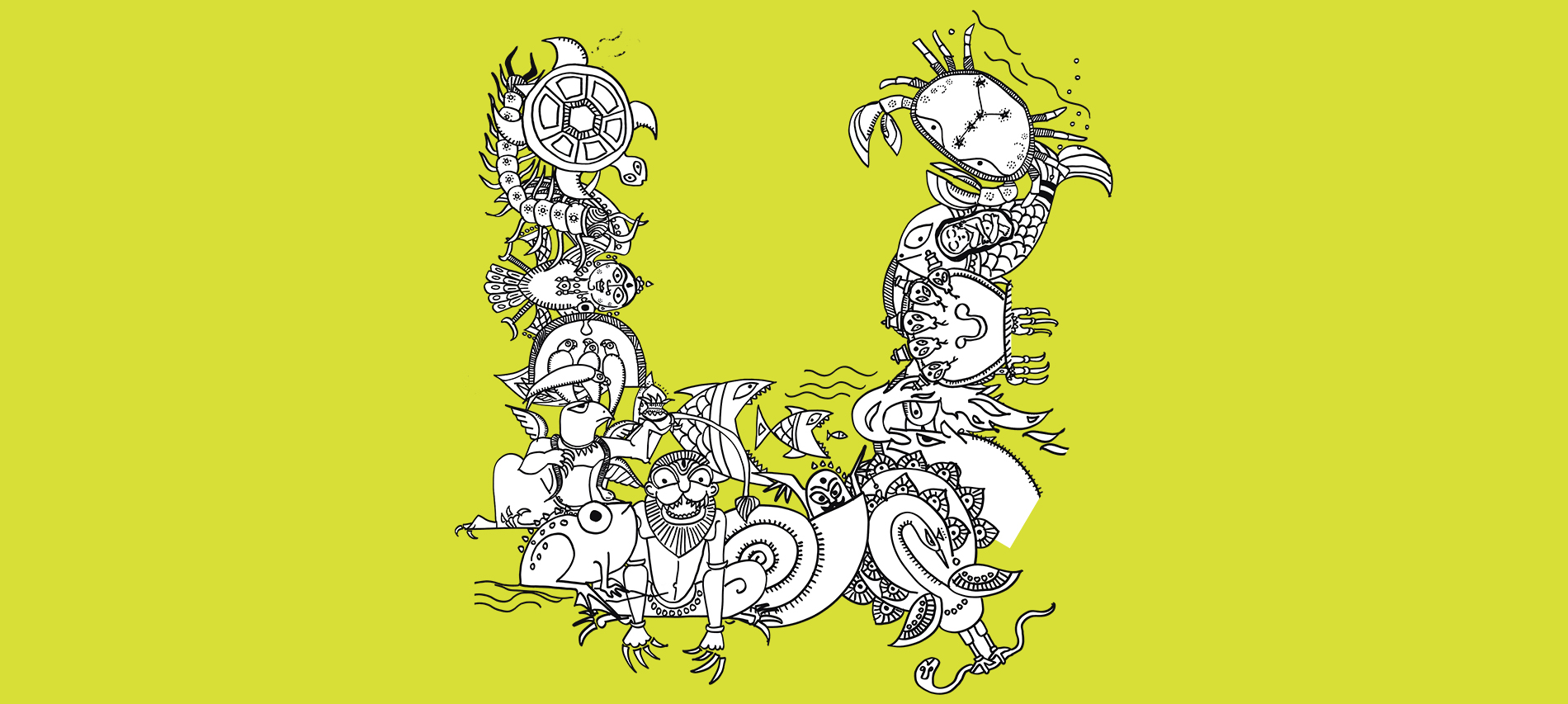By Dr Vineet Aggarwal
When young Jagdish aka J. C. Bose, a brilliant Indian scientist extended his hand to pluck a flower, his mother admonished, him, ‘Plants were not to be disturbed at night! It’s time for them to sleep.’
As a kid, when I heard similar warnings from my grandmother, I used to laugh them away calling her superstitious. Born in pre-independence India, my grandmother was barely educated, what would she know about plants or the science associated with them? It wasn’t until I took up botany years later and learnt the concept of Nyctinasty (in lay terms, the response of plants to changes in light intensity), that I realized how deeply based on science this suggestion actually was.
The innocuous statement said to a young J. C. Bose, helped change our understanding of the plant kingdom for all time to come for it made him show the world that plants could feel pain as well as understand affection. This realization made me wonder what could happen if we look at other such myths and so called superstitious religious beliefs in the light of science. There is so much information available at the click of a button that it is almost criminal to not to explore the world around us and get to know more about it.
When I tell someone I am a doctor, most people automatically assume I would have nothing to do with religion. The perception that people into science are not into religion and vice-a-versa is quite prevalent and I know it is not without reason. These two disciplines have always been at logger heads with each other. Galileo, who quite to the chagrin of the notions of established religion, used the telescope to declare that the Sun did not after all revolve around the earth, had to kneel to the clergy and accept that his theory was false.
Charles Darwin, who first came out with the Theory of Evolution faced considerable criticism. In spite of a huge body of evidence to support his claims, most religious clerics and even many men of science refused to accept the theory in his lifetime. Even today, leaders of various religious communities keep giving diktats to their followers on what is or isn’t acceptable. Similarly, we find a lot of people educated in the modern system of schooling rubbishing religious beliefs as primitive mumbo jumbo. Of course a lot of religion is ritual but that doesn’t mean all of it is to be considered unscientific. At the same time, religious leaders should open their minds and consider that science is not against religion as much as it is against blind superstition.
So are Science and Religion destined to remain at loggerheads with each other? Maybe not if we keep an open mind towards the possibility that their amalgamation provides. Today, I am a blogger and an author precisely because I decided to explore the connection between them and share it with those kindred souls who might have the same interests as me.
My blog, Decode Hindu Mythology, has articles delving into various myths taken from comparative world mythologies. Each article utilizes at least one stream of science to analyze it in a better way for the modern audience. It could be archaeology, genetics, astronomy, linguistics, oceanography or any other branch of science that is relevant for that particular topic and I am glad to observe a healthy response from readers all over the globe.
To give an example of what I have been rambling about, the three big religions of the world – Christianity, Islam and Hinduism – talk about the ‘Great Deluge’ that drowned everything and life could continue only when God intervened and selected one virtuous man to begin life anew after the waters receded. According to the Abrahamic religions, the only survivor of this global flood was Noah who survived by creating an Ark as commanded by God’s angels while in Hindu beliefs, this task was undertaken by Vaivasvat Manu with help from Lord Vishnu’s Matsya, amphibian Avatar.
When I researched more I found that such flood-myths were not restricted to these three religions, and could be found in mythologies from Philippines to Babylon to Egypt to Nigeria and Mexico! I wondered if the presence of these myths in widely separated geographies indicated that a large part of the globe had really gone underwater at some time in history and while finding the answer to a question posed by religion, it was science that came to the rescue.
In the glacial period all water was withdrawn from the oceans and got stored as ice that covers the land in thick sheets of ice. When the meltdown begins, all water was released back into the oceans, inundating what used to be habitable land and wiping out signs of all civilization. The stories of Noah and Vaivasvat Manu then may just be the stories of the survivors of that global flood that affected almost all coastal civilizations. Not too much difference between the beliefs of science and religion then?
This is not the only example; a similar congruity can be found in descriptions of the Sun-god (Apollo to the Romans, Ra for the Egyptians and Surya in Hinduism) traveling across the skies. Hindu sages describe that the Sun-god’s chariot has one central wheel with twelve spokes and is drawn by seven horses. Sounds like a fairytale till you pause to think about the extremely specific numbers. Could it be possible that the central wheel with twelve spokes was actually a metaphor for the Solar year, divided into twelve months? Would it be too far-fetched if I equated the seven horses yoked to this fantastic chariot with the seven colors that comprised the sunlight?
There are many such interesting nuggets you find once you start exploring the scriptures. Today, as I explore new ideas for writing such posts as well as books on lesser known characters from India’s scriptures, I try and weave into the plots a sense of scientific endeavor. The protagonists of my books – Vishwamitra, Parshu-Raam and Bharat – do not confine themselves to use of mystical spells and paranormal activity but also utilize science and technology to achieve their wondrous feats.
My research for the blog as well as the books has also led me to the conclusion that it may never be possible to draw a neat segregating line between science and religion. If instead of seeing the two as competitors, we accept that they may actually be complimentary to each other, it opens up a wide vista of knowledge that can help both disciplines learn from each other. After all, isn’t that the common goal of both religion and science – the enlightenment of human mind?
I conclude with the belief that it is high time we let science and religion co-exist once again just as they have done since the beginning of mankind. Only then we can ensure a brighter and more holistic future for humanity.
About the Author
After dabbing with his family profession, Dr Vineet Aggarwal undertook writing. Not only is he a bestselling author, he also runs a blog called ‘Decode Hindu Mythology’ which has a dedicated readership. Dr Aggarwal is also working with an Indian pharmaceutical MNC.

Tag: Myths
Just Before We Set Off For Earth — 'Earthward Bound'
As one recovers from the heavy hearts left behind after a brilliant week of Durga Puja fun and festivities, here’s a little throwback with a short story, ‘Earthward Bound’, by writer Nayanika Mahtani, on what happens in Goddess Durga’s household just before she descends on earth with her children, ushering in a joyful autumn!
‘Come on kids, get ready – we’re off on a little journey,’ said Goddess Durga. Her four children Lakshmi, Saraswati, Kartikeya and Ganesha were busy having a snowball fight in the mountains of Kailash.
‘Where are we headed, Ma?’ asked Ganesha.
‘To Earth of course, silly!’ said Saraswati.
‘Have you forgotten – we go every year when Ma is invited by her devotees?’ said Lakshmi.
‘I knew that – obvio!’ mumbled Ganesha.
‘Yup, he would never forget the sweets at Puja,’ piped in Kartikeya.
‘Could you four please stop squabbling – we need to get there in time!’ said Ma Durga. ‘Oh, quick check – have I taken everything?’
‘Hmm, let’s see Ma,’ said Saraswati. ‘Have you got Vishnu’s discus, Shiva’s trident, Varuna’s conch and noose, Agni’s flaming dart, Vayu’s bow, Surya’s quiver full of arrows, Yama’s sword and shield, Vishwakarma’s axe and armour and Indra’s thunderbolt?’
‘Whoa! That’s quite a handful – good thing you have so many hands, Ma!’ said Ganesha. ‘How come you get to keep all the weapons that the Gods gave you to fight Mahishasur – even though he is now long dead?’
‘Well, Mahishasur may be dead but evil lives on, Ganesha – and I always need to be ready to fight evil,’ replied Ma Durga.
‘Will we be riding on the lion given to you by Himavat?’ asked Lakshmi.
‘Of course!’ said Ma Durga. ‘Now as you know the Devi Paksha rituals start from Mahalaya, when we begin our journey to Earth. Who remembers what Mahalaya means?’
‘Ahem, I do!’ said Kartikeya, casting a sideways glance at Ganesha. ‘“Maha” means ‘big’, and “laya”, means ‘destruction’. It refers to the colossal war between the Devtas, Rishis and Asuras – where many Devtas and Rishis died at the hands of the Asuras. People on Earth consider Devtas and Rishis to be their forefathers. That’s why the ritual of Tarpan or Shraddh happens on Mahalaya, when prayers are offered in remembrance.’
‘Bah! Such a show-off!’ muttered Ganesha, whose mind was now feasting on the soon-to-be-had sandesh and laddoos.
‘Though the actual Puja starts from the sixth day, the Shashthi, when we five arrive on Earth,’ added Saraswati.
‘That’s right,’ said Ma Durga. ‘It begins with Bodhan, which marks the moment when I was given all the divine arms to rid the Earth of Mahishasur’s tyranny. On Shashti, my face is uncovered – to show that I have arrived on Earth. The next day is Saptami and it starts with a ritual called “Kola Bou”.’
“Ha ha! Kola Bou’s your wife, Ganesha!’ teased Lakshmi. ‘Such a pretty banana tree stalk, bathed and draped in a white sari with a red border and placed by your side!’
‘Tsk, don’t make him blush, Lakshmi!’ chided Ma Durga. ‘Actually it is not just a banana stalk that is bathed; nine plants are placed by my Ganesha after the bathing rituals. It’s called “Nabapatrika” puja – and these nine plants represent the nine forms of Shakti, of which you are one too, my Lakshmi.’
‘I feel a bit sidelined, to be honest,’ said Saraswati.
‘Come on! You get a day all to yourself to be worshipped,’ said Kartikeya.
‘Well, you get a day like that too, Kartikeya’ said Ma Durga. ‘Anyway, let’s not get sidetracked, kids! So then follows Ashtami which is considered the most auspicious day of Durga Puja – with its most significant ritual being the Sandhi Puja.’
‘Let me elaborate,’ said Kartikeya with a flourish. ‘Sandhikshan, when Sandhi Puja is done, falls between the last 24 minutes of Ashtami and the first 24 minutes of Navami. This is the exact time when the Asuras Chanda and Munda were slain by Ma.’
‘It for this reason I am also called Chamunda,’ said Ma Durga.
‘Aarrgh! Why doesn’t our family keep just one name for each of us?’ asked Ganesha. ‘I have such a hard time keeping track of all my names. It’s so tricky figuring out when I’m being called!’
Ma Durga smiled and carried on. ‘Then comes Dashami or Vijaya Dashami which is the day I killed Mahishasura – and freed the Earth of his torments. Vijaya Dashami is the last day of the puja.’
‘And it’s also when Ma’s idol is taken to a water body and immersed, denoting her journey back to Kailash,’ said Saraswati.
‘That’s right! Well done, all of you!’ said Ma Durga. ‘Now hold on tight – we’re about to take off!’
‘Have a safe journey, family,’ boomed a deep voice in the background. He watched Ma Durga and the children fly earthwards. Lord Shiva closed his eyes. ‘Ah! Now for some peace and quiet, finally.’
Would you like to look up what each of the weapons of Goddess Durga signifies? Hindu mythology is such a treasure trove – there’s always more than what meets the eye. Look for these treasures – you won’t be disappointed!
Note: Ganesha was of course just pretending to not know all the answers in this story, to rile his Mum and siblings. He in fact is quite the know-it-all. Though he can get distracted when sweets are involved. ☺
Nayanika Mahtani is a copywriter by day and a storyteller by night. She lives in London with her husband, two daughters and their two goldfish named Sushi and Fishfinger. Nayanika has published two books with Puffin, ‘Ambushed’ and ‘The Gory Story of Genghis Khan’.
The Great Animal Kingdom of Hindu Mythology: ‘Pashu’ — An Excerpt
Hindu mythology not only has some of the most interesting human characters ever, but a huge kingdom of animals too. From fish that save the world to horses that fly higher than birds, every animal in Hindu mythology has a story to tell and a lesson to teach.
Devdutt Pattanaik’s ‘Pashu’ dives into this bizarre, wonderful world of mythological animals and unravels a secret or two about it.
Here’s a snippet from ‘Pashu’ that is sure to make you want to find out more!
Brahma, the creator, had a son called Kashyapa. Kashyapa had many wives who bore him different types of children. Aditi gave birth to the devas—gods who live in the sky. Diti gave birth to the asuras— demons who live under the earth. Kadru gave birth to the nagas, slithering serpents and worms that crawl on trees and on earth. Vinata gave birth to garudas, birds and insects that fly in the air. Sarama gave birth to all the wild creatures with claws and Surabhi gave birth to all the gentle animals with hooves. Timi gave birth to all the fishes and Surasa gave birth to monsters. Thus, all gods, demons, animals and even humans have a common ancestor in Kashyapa. They call him Prajapati, father of all creatures. His story is found in the Puranas, books that are at least two thousand years old.
There are also other theories of how animals came into being. Some can be found in earlier books, while some have never been written but passed down orally by stargazers and storytellers.
Brahma and Shatarupa: The first man, Brahma, saw the first woman, Shatarupa, and fell in love with her. He tried to touch her. She laughed and ran away. He followed her. To avoid getting caught, she turned into a doe. To catch up with her, he turned into a stag. She then became a mare. He became a stallion. She transformed into a cow. He turned into a bull. She became a goose and flew up into the air. He followed her, taking the form of a gander. Every time she took a female form, he took the corresponding male form. This went on for millions of years. Thus, over time, all kinds of beasts came into being, from ants and elephants to dogs and cats. So say the Upanishads, conversations that took place nearly three thousand years ago.
Yogasanas: Shiva, the great yogi, was at peace with himself. In his joy, he assumed many poses, known as asanas. Many of these poses resembled animals. For example, the ustra-asana resembled a camel. When Shiva took this pose, camels came into being. From the matsya-asana, fishes came into being. From the bhujang-asana, snakes came into being. From the salabh-asana, locusts came into being. From the go-mukha-asana, cows came into being. Shiva thus stood in millions of poses, giving rise to millions of different kinds of animals. So says the lore of yogis.
Avatars: From time to time, Vishnu, who resides on the ocean of milk, descends to walk on the earth. He takes the form, or avatar, of different animals when he does so. Sometimes he is a fish, sometimes a turtle, sometimes a wild boar, sometimes a swan . . . In memory of the many forms he took, various animals came into being. So the next time you see a fish, remember that it was once a form of Vishnu. And when you see a swan, remember that, too, was once a form of Vishnu.
Rashi: A cluster of stars is known as a constellation. Ancient rishis divided the sky into twelve equal parts, each occupied by a constellation. The constellations are called zodiacs in English and rashis in Sanskrit. Some of the rashis take the form of animals. There is the Mesha or ram constellation that the sun passes through in early summer. Then there is Mina, the fish; Vrishchika, the scorpion; Simha, the lion; and Vrishabha, the bull. After the sun passes the Makara constellation, whose tail is like a fish and head is like an elephant, the days grow longer and warmer, heralding the approach of summer. After the sun passes the Karka or crab constellation, the days become shorter and colder, indicating the approach of winter. This information comes from Jyotisha Shastra, or the books of astrology. Poets often wonder what came first: the constellations or the animals. Did the design of the stars inspire the gods to create the animals?
Yoni: Many Hindus believe that a being gets a human life only after passing through 84,00,000 animal wombs. Astrologers say that one can find out which was the last animal’s womb or yoni one was born in from one’s time of birth. That yoni determines an aspect of one’s personality. Some of the yonis are: elephant, cow, mare, snake, cat, dog, rat, monkey, tiger, goat, buffalo and deer. Which yoni came first—that of man or that of an animal? Are humans the ancestors of animals or is it the other way around? There is no escaping the fact that we are related to the birds and beasts of the forest. They may be our ancestors or they may be our descendants.
Have more questions on the origins of the mythological animal kingdom? Get your copy of ‘Pashu’ now!

Things You Didn’t Know About ‘Vyasa’ Illustrator Sankha Banerjee
The first in the series that retells the story of the epic Mahabharata, Vyasa sets the stage for the battle of Kurukshetra. This brilliantly illustrated graphic novel is authored by Sibaji Bandopadhyay.
Bringing this epic to life is artist Sankha Banerjee, who enthralls the readers with the many illustrations in the graphic novel.
Here’s taking a sneak peek into the interesting life of Sankha Banerjee.






We bet you’re as dazzled by his art work as we are!











